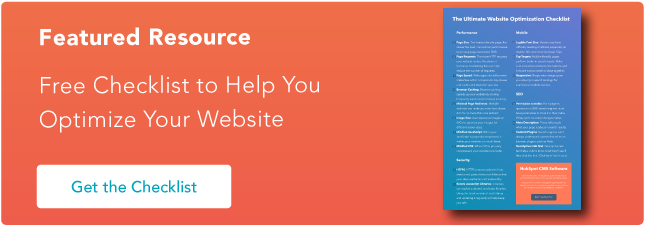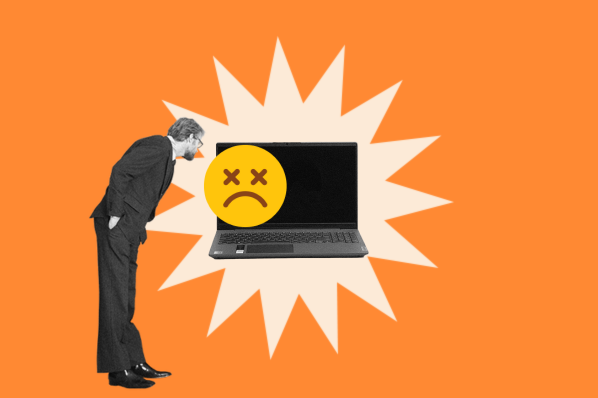Are you tired of seeing your website page load times decrease? If so, it might be time to look into image optimization. Your website's images are key components for creating an engaging and informative experience for viewers.

Google has found that sites taking over 10 seconds to load will experience a 123% rise in bounce rates. Websites with images are likely to experience difficulty improving their page speed, thus heightening the number of visitors who exit your website.
In this blog post, we'll explain why you should consider image optimization and several steps to optimize your images quickly and easily.
Understand the Basics of Image Optimization
Before we dive into how to optimize images for page speed, let's start by understanding the basics of how it works.
What is image optimization?
Image optimization is the process of optimizing an image for web use by reducing its size, decreasing the time it takes to download the image, and increasing how quickly the page loads. This process involves compressing the file size, changing the image format, and resizing the dimensions of your images.
It’s essential to ensure that your website is as fast as possible. One of the key contributing factors to how quickly a web page loads is how optimized the images are that are included in it. If images are not properly optimized, they can cause lagging loading times and lowered page performance.
When done properly, image optimization can drastically decrease the size of your images in kilobytes and megabytes without affecting how they appear on a website.
Compressing and resizing images is essential to optimizing your website for page speed. By compressing and resizing your images, you can reduce how long it takes for a page to load and how much data they take up.
In addition, you should also consider investing in a tool that can automatically compress images and optimize them for you. This will save you time while also ensuring your website runs faster than before.
Tips to get Started With Image Optimization
Now that you understand how image optimization works let's dive into some best practices for optimizing images. Fortunately, optimizing images for better page speed is a relatively straightforward process. Here are some tips to help you get started.
Choose the Right Image Format
The most common image formats are JPG, PNG, GIF, and SVG. Each of these file types has unique advantages and disadvantages.
JPG is the default image format used by most digital cameras and phones. It's good for photographs because it supports a wide range of colors and resolutions. However, it's not as suitable for images with sharp edges or text because the image quality can suffer when compressed.
PNG is another popular image format best suited for graphics and logos. It supports transparency and produces sharper edges than JPGs but doesn't support a wide range of colors and has larger file sizes.
GIFs are often used for simple animations and graphics, supporting up to 256 colors. However, they don't support transparency and have smaller file sizes than other image formats.
Finally, SVG is the best option for vector images that require a lot of details without taking up too much space.
Compress Your Images
Compression is the process of reducing how much data your images take up without affecting how they appear on-screen. Compressing your images before uploading them to your website is essential, as this can drastically reduce their file sizes and speed up page loading times.
Various tools and services are available for compressing images, such as TinyPNG and ImageOptim. These can optimize your images with minimal effort on your part.
Resize Your Images
Another way to reduce how much data your images take up is by resizing them before uploading them to your site. This involves reducing the dimensions and pixel size of the image so that it takes up less space but still looks good on-screen.
You can use a tool like Photoshop or GIMP to resize manually and crop images as needed or a service like Kraken or Cloudinary that automatically resizes and optimizes images for you.
Use Lazy Loading
Lazy loading is the process of loading images only when they appear in the viewport. This allows you to prioritize how your images load so that certain elements on a page can be displayed first for a faster user experience. You can use a plugin or write code using JavaScript and HTML to implement lazy loading.
How to Find Image-Related Issues on Your Site
To ensure your website runs at optimum performance and maintains maximum efficiency, numerous testing tools can be used to evaluate image-related issues and page load speed.
Google PageSpeed
Google PageSpeed provides insights into how fast your website loads, how well its images are optimized, and how you can improve your page loading times.
Google Lighthouse
Google Lighthouse is an open-source tool that allows you to audit your website's performance across multiple categories, including how optimized its images are. It also provides detailed suggestions on how to improve your website’s performance.
Pingdom
Pingdom allows you to test how quickly your website loads from multiple locations and how many requests are being made for each image.
GTmetrix
Like Pingdom, GTmetrix offers a comprehensive report of how your website performs and how you can improve it. It includes a detailed analysis of how well your images are optimized and how quickly they load.
Image Optimization Final Thoughts
By following the tips above, you can significantly reduce how long your website’s pages load, providing viewers with an improved experience and keeping them returning for more. Image optimization is an often overlooked aspect of web development – but as we've seen here, it's an essential part of ensuring page speed and performance. So don’t forget to make image optimization part of your website strategy.
![Free Resource: Website Optimization Checklist [Download Now]](https://no-cache.hubspot.com/cta/default/53/00d9cc96-eff7-4cea-8ff3-583374c3dcd5.png)







![The HubSpot Blog’s 2023 Web Traffic & Analytics Report [New Data]](https://www.hubspot.com/hubfs/Web%20Analytics%20Traffic.png)


